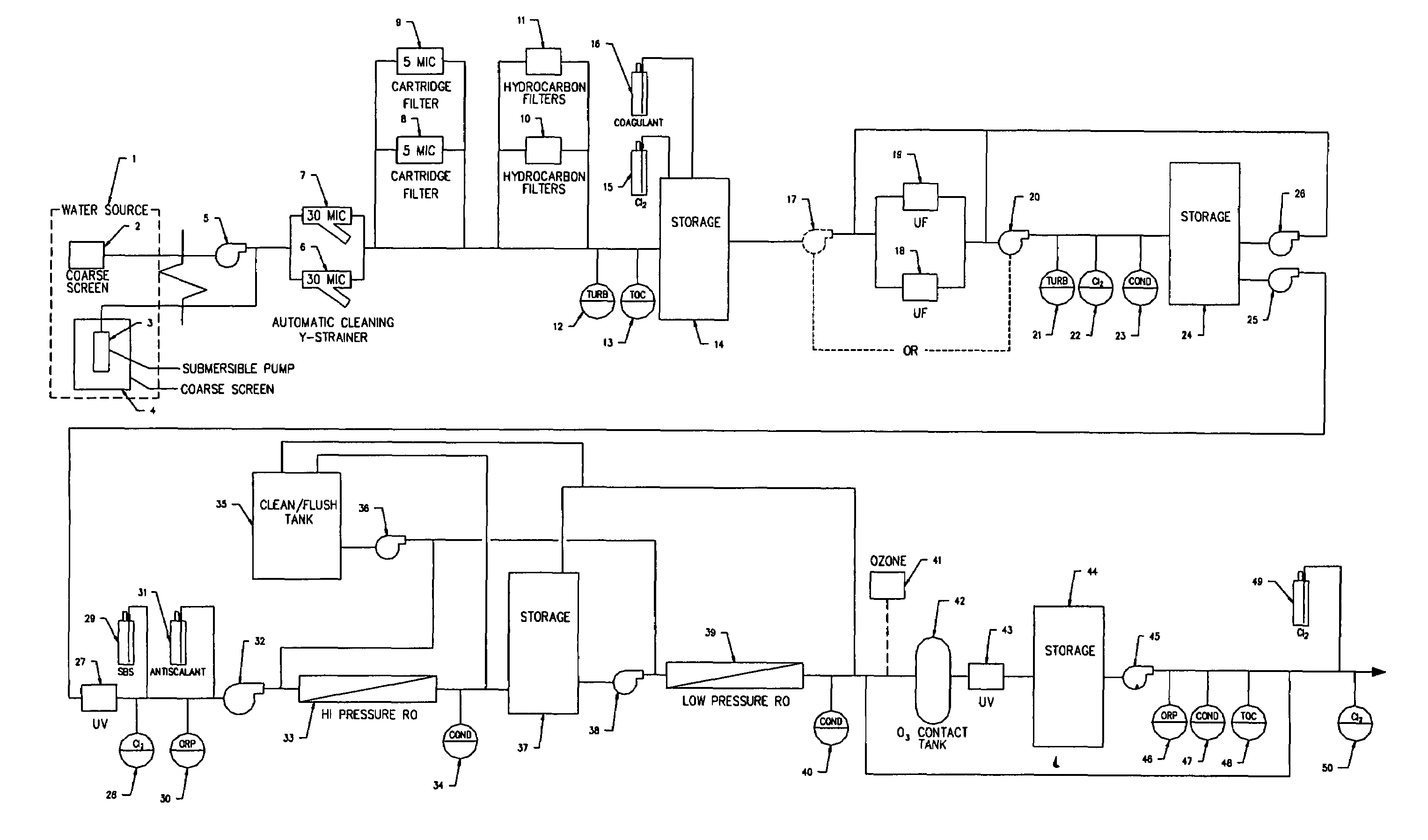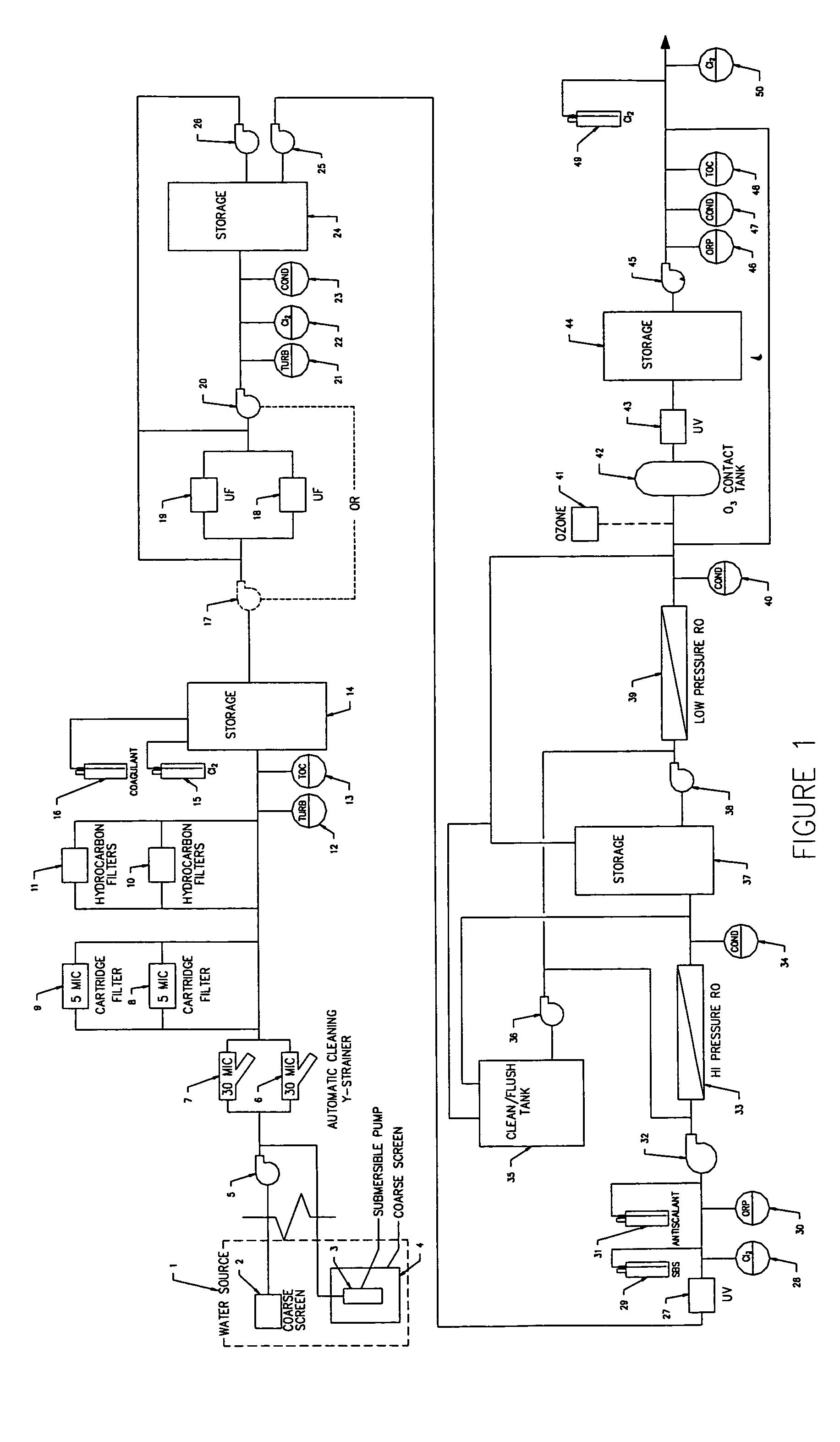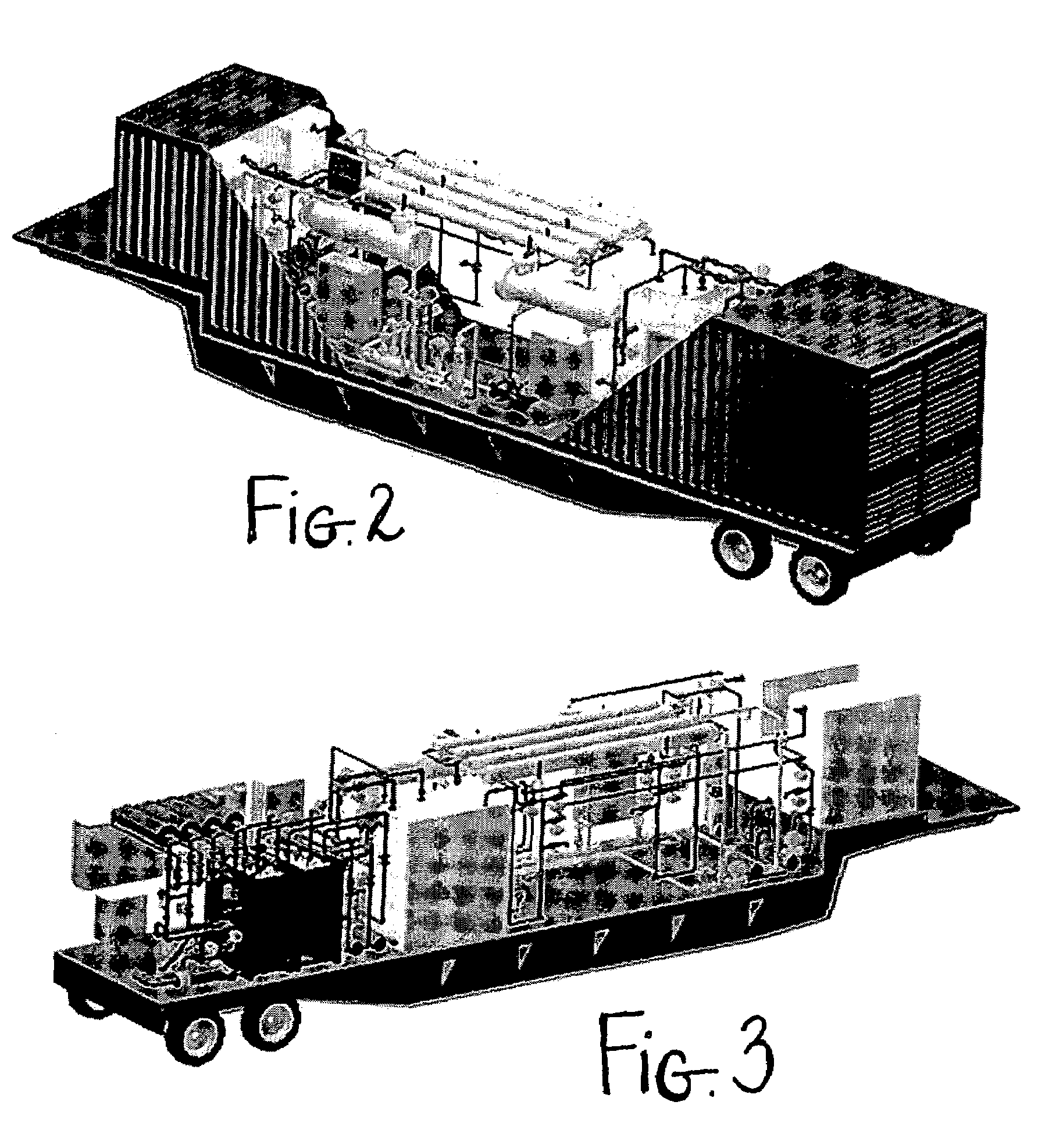Universal water purification system
a water purification system and universal technology, applied in the field of water purification, can solve the problems of compromising the functionality of existing water treatment facilities, affecting the operation affecting the quality of water treatment facilities, so as to achieve the effect of eliminating all potential contaminants
- Summary
- Abstract
- Description
- Claims
- Application Information
AI Technical Summary
Benefits of technology
Problems solved by technology
Method used
Image
Examples
Embodiment Construction
[0028]The present invention provides a water purification system incorporating numerous water purification technologies including particle barriers in several pore sizes, ultrafiltration membranes, reverse osmosis membranes, ultraviolet light, hydrocarbon adsorbent media, ozonation, chlorination, and dechlorination. FIG. 1 shows a process flow diagram for a preferred embodiment of the purification system.
[0029]Water is pumped into the treatment train from the water source (1). The rate of influent water flow is variable and maintained by the advanced control system (ACS). The system can utilize a stationary pump (5) with a suction-line placed into the water source or a portable submersible pump (3) that is placed into the water source. A very course screen (2,4) protects the inlet to the pump to prevent sticks and leaves and other large objects that could damage the pump form entering it. The pressurized water from the pump proceeds through a Y-type strainer with a pore size of 30-5...
PUM
| Property | Measurement | Unit |
|---|---|---|
| pore size | aaaaa | aaaaa |
| pressures | aaaaa | aaaaa |
| pore size | aaaaa | aaaaa |
Abstract
Description
Claims
Application Information
 Login to View More
Login to View More - R&D
- Intellectual Property
- Life Sciences
- Materials
- Tech Scout
- Unparalleled Data Quality
- Higher Quality Content
- 60% Fewer Hallucinations
Browse by: Latest US Patents, China's latest patents, Technical Efficacy Thesaurus, Application Domain, Technology Topic, Popular Technical Reports.
© 2025 PatSnap. All rights reserved.Legal|Privacy policy|Modern Slavery Act Transparency Statement|Sitemap|About US| Contact US: help@patsnap.com



